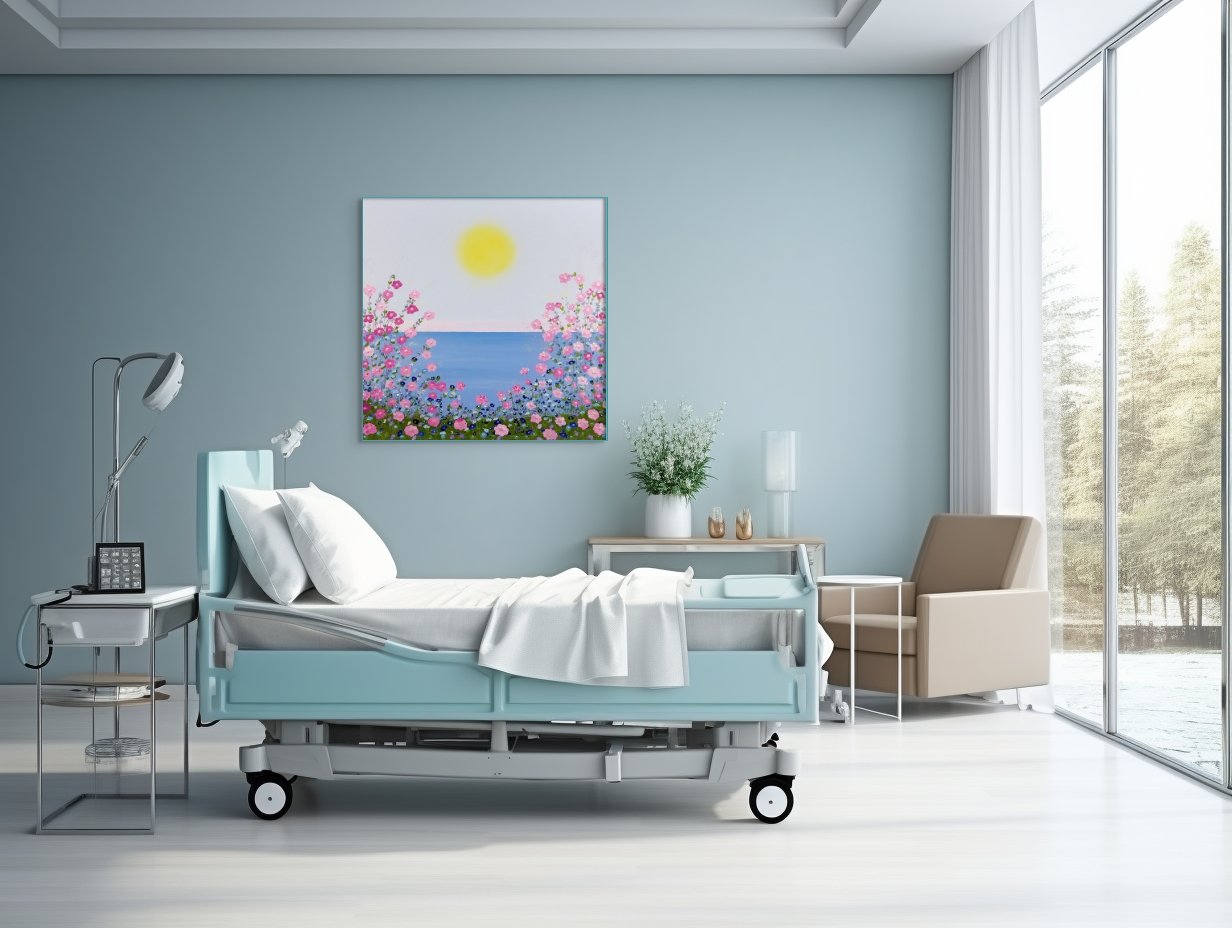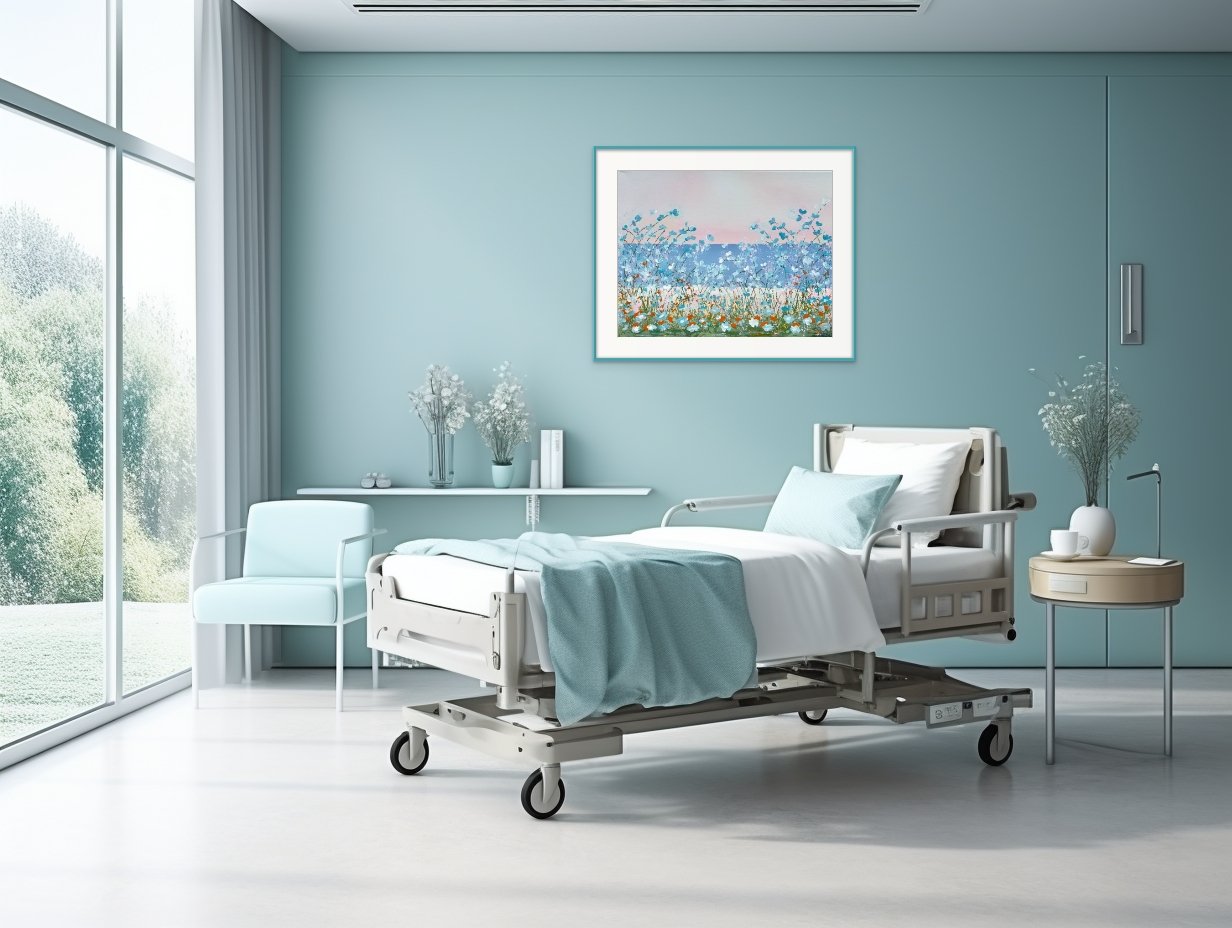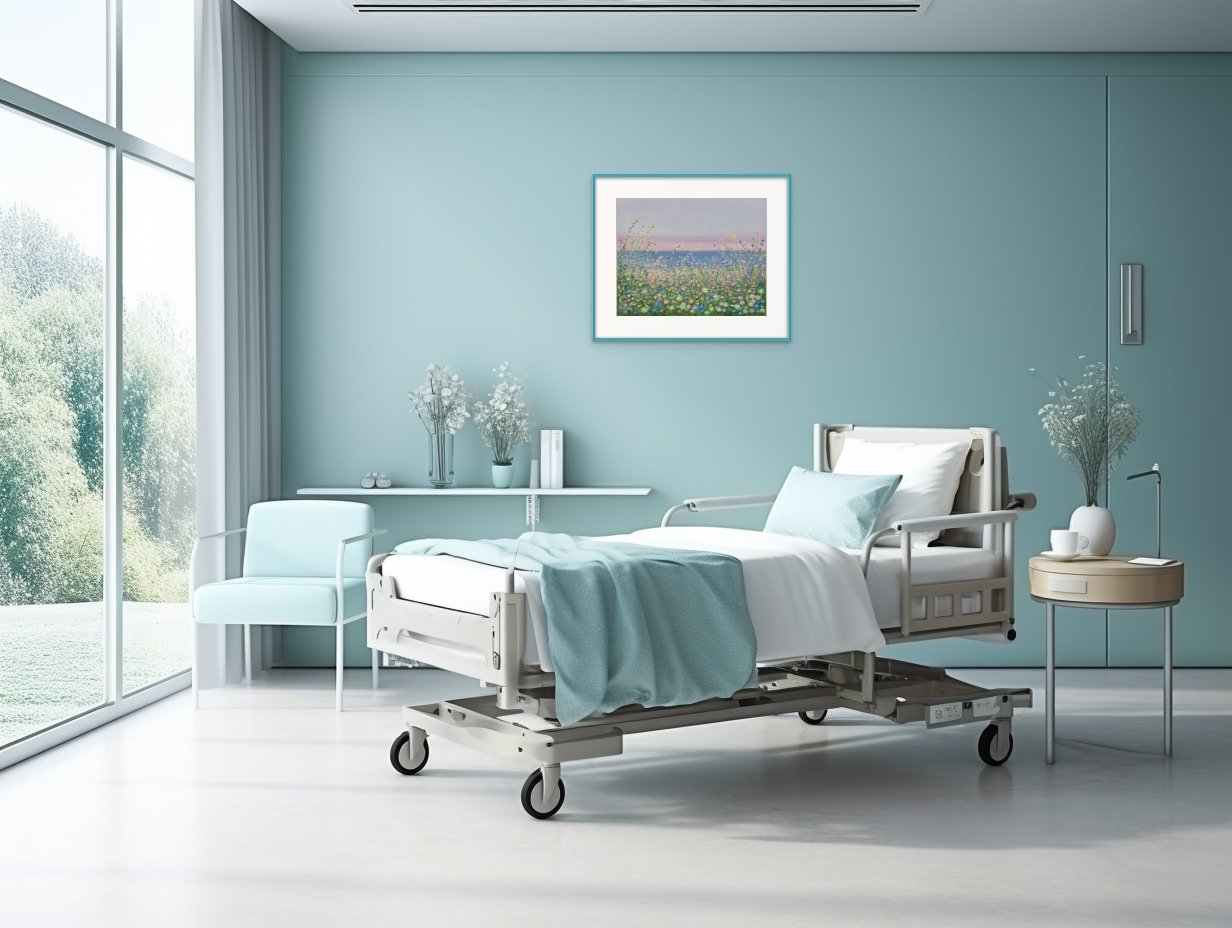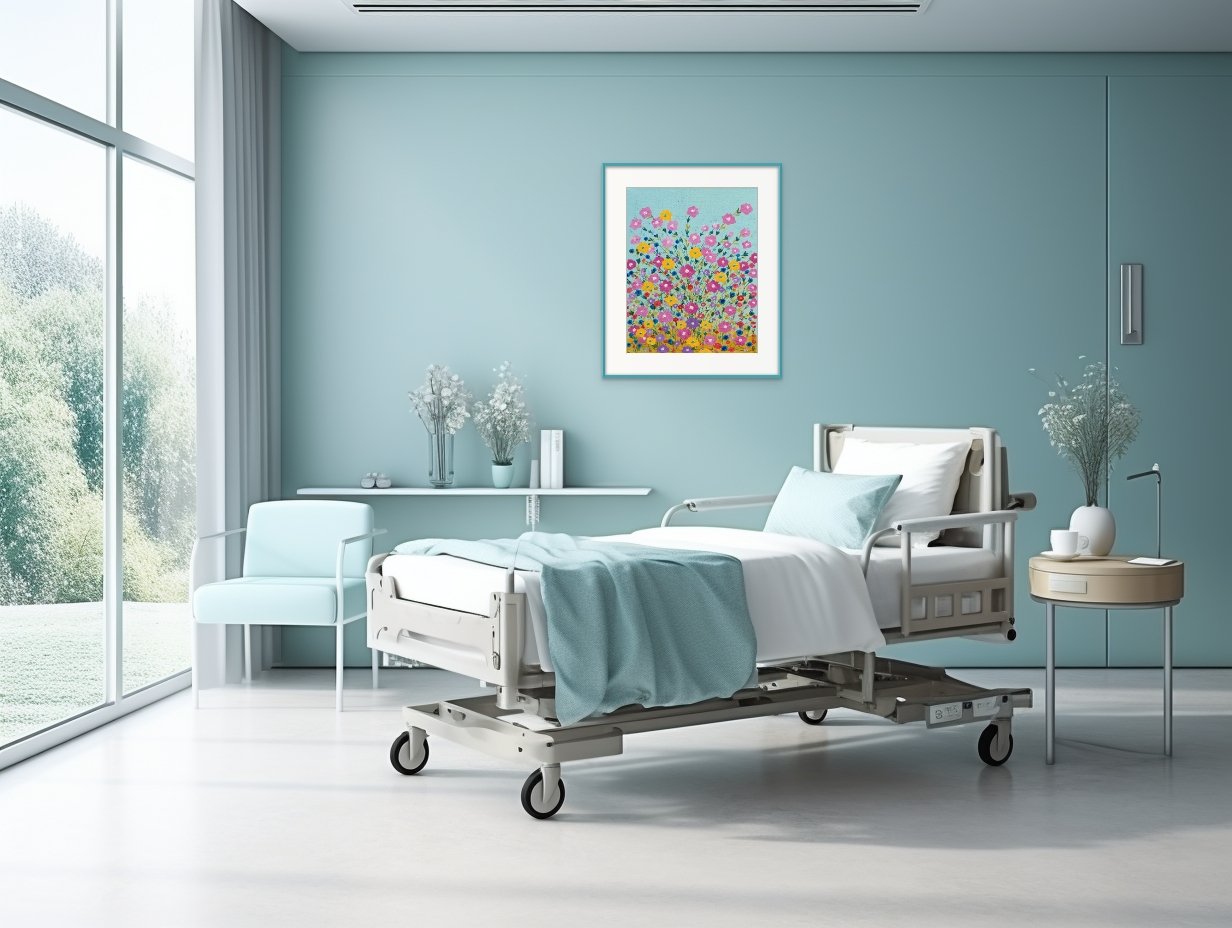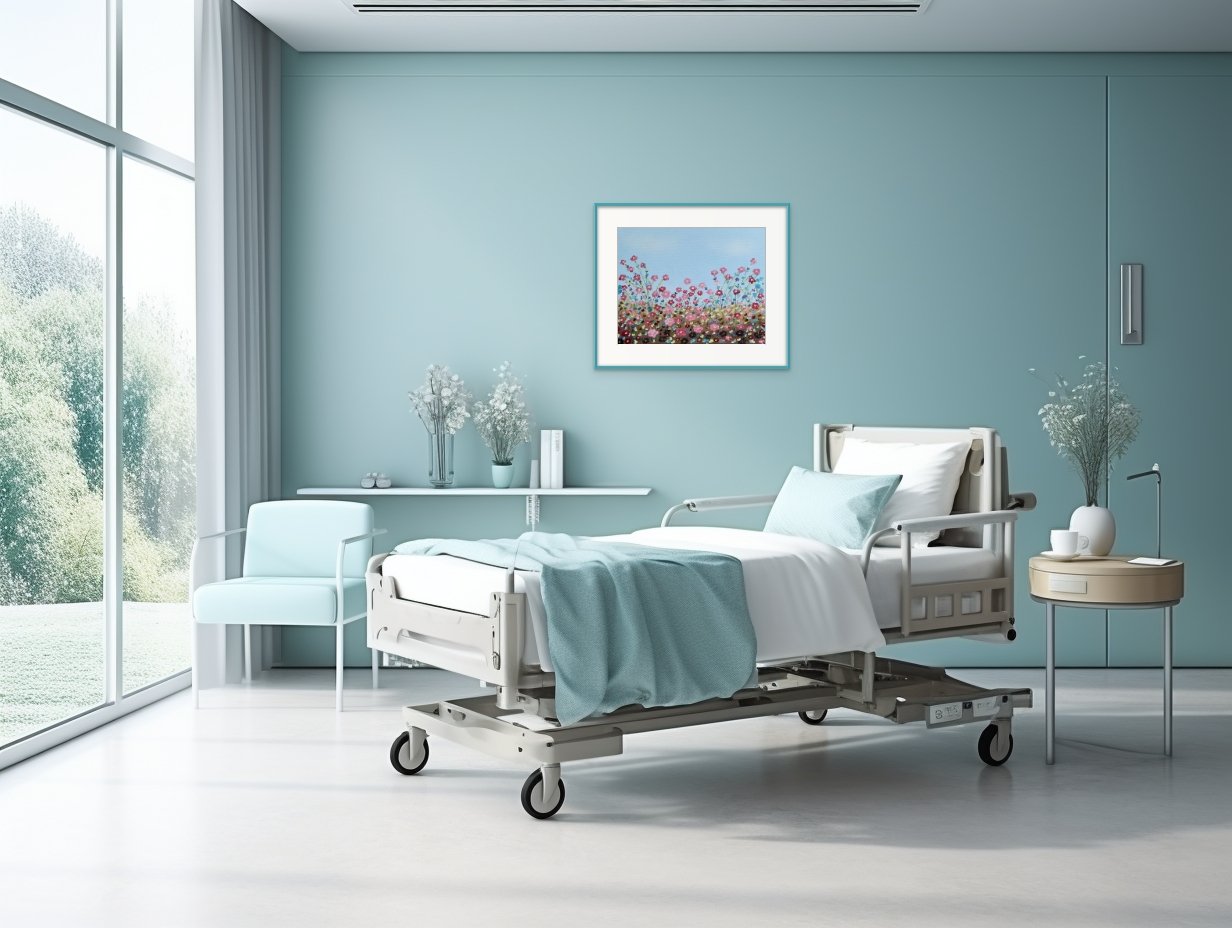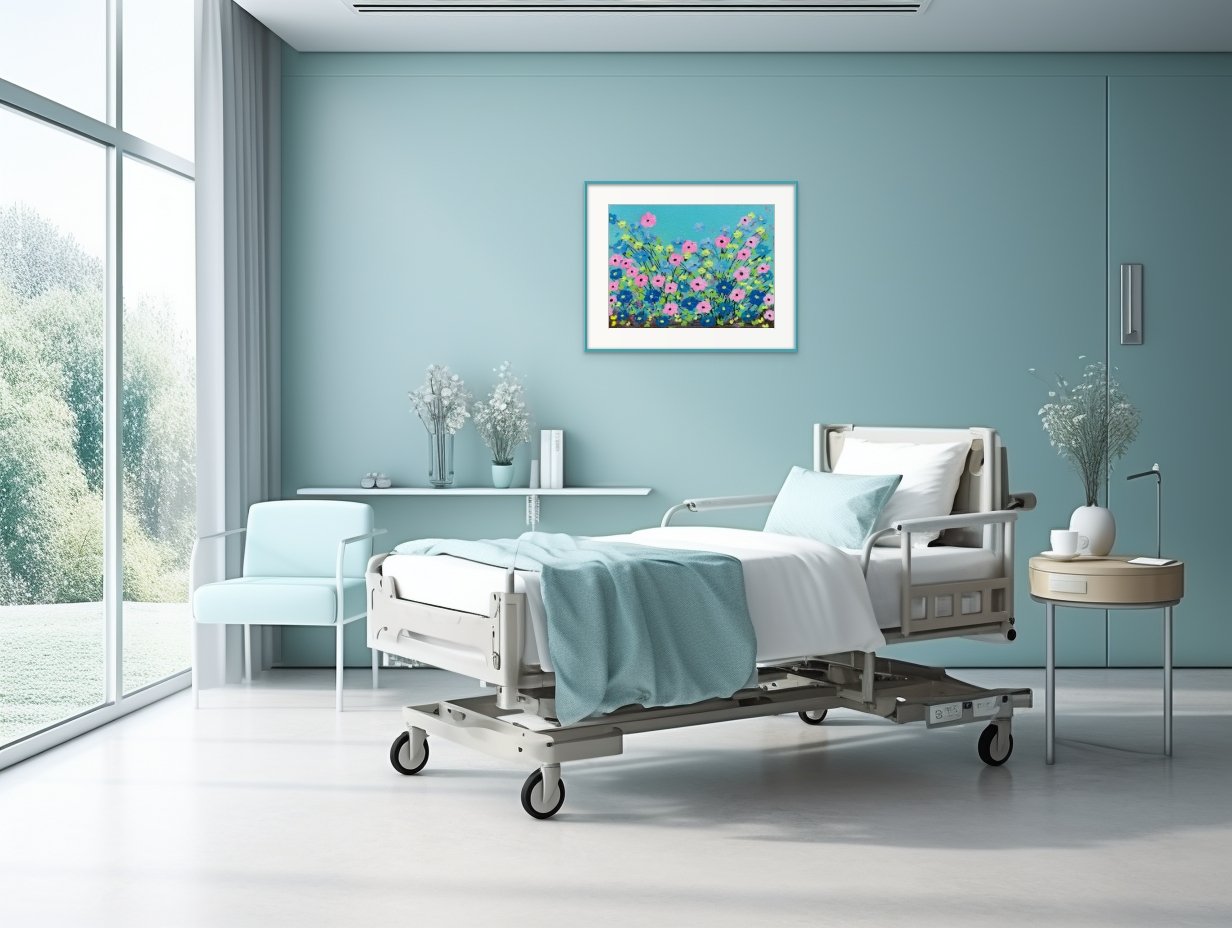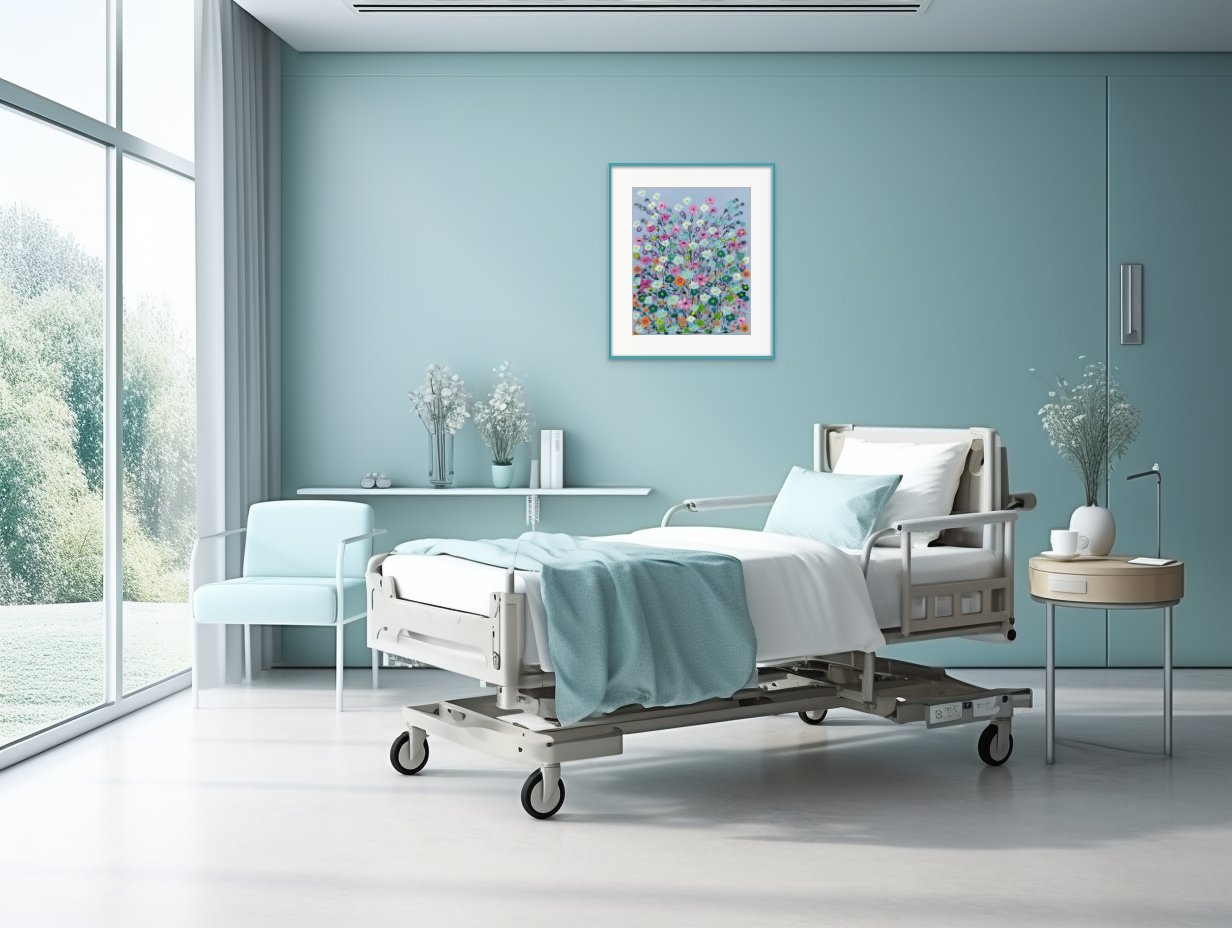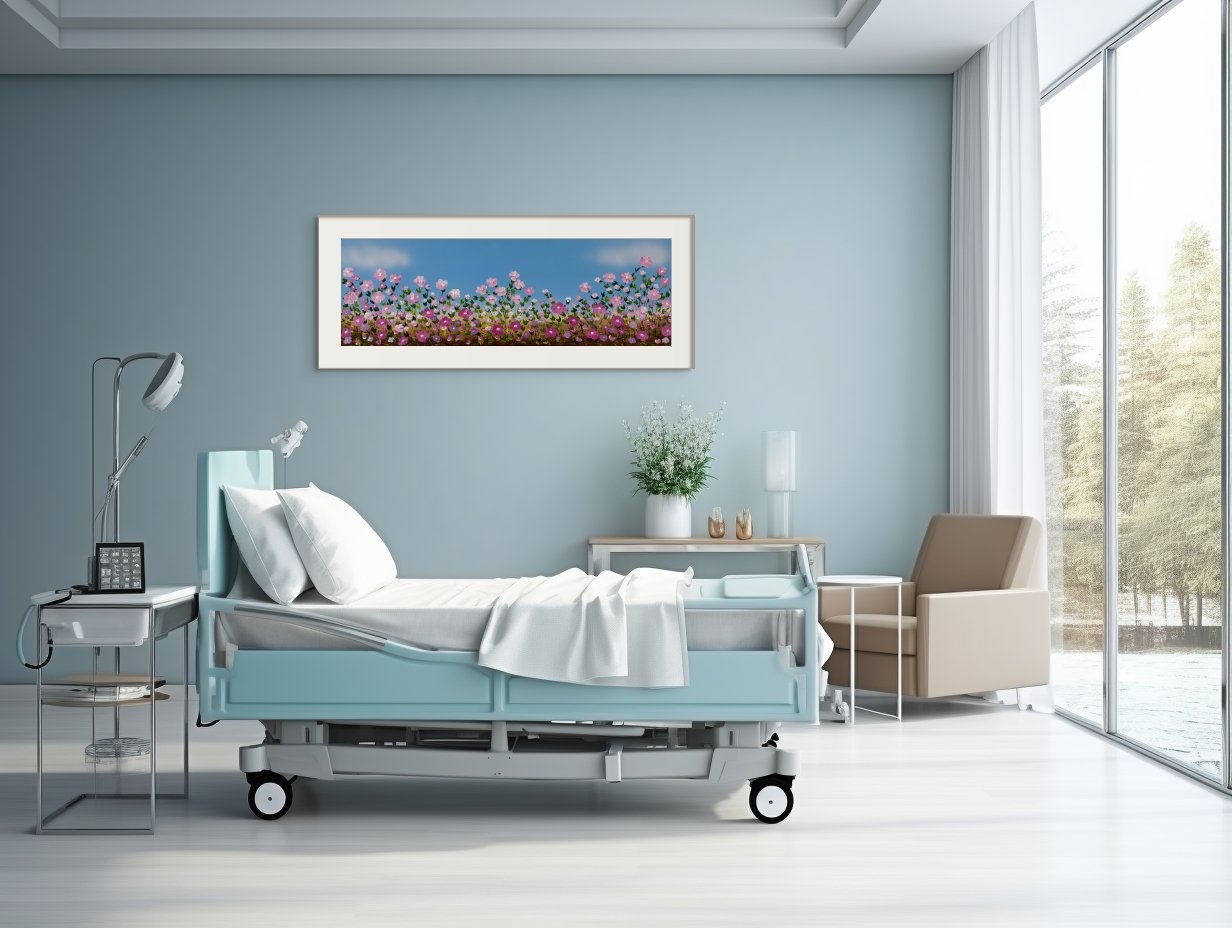Inside Evidence-Based Design Art
I do not have the expertise of a neuroscientist or medical researcher or practitioner, but I do LOVE to study their evidence-based design results and find ways to experiment with them in art.
In Symphonies Of Love Number 11 my goal was to create a beautiful work of art without much impact.
To create the beauty, I chose the shape of a heart because I wanted a very clear, strong message that instantly communicated, “You are loved.” I find too much evidence-based design art today a little too wispy and without form. Sometimes people, and especially children, need a clear, up-in-your-face message, especially one of love.
Can you imagine a child in a patient bed or waiting area? Fear, worry, doubt can be big factors within a healthcare setting. I think an image of a heart outperforms a typical biophilic design when it comes to encouraging feelings of love, safety, and care.
Also for this painting, I chose to blend the inner area of each flower mostly with each flower’s petal color. What this does is create beauty without impact/stress, something super valuable within many healthcare environment locations. Some people are at the outer limits of their emotions in this setting, so creating beautiful art that does not stress is often welcome and greatly appreciated.
Take a look inside my book, 100 Days Of Happy Happy Art, Evidence-Based Design.
There’s even a chapter on neuroscience and art.
Inside Evidence-Based Design Art
If you walked past this painting in a healthcare hallway, would your brain receive a message of love without being overly impacted or stressed by the art?
I do not have the expertise of a neuroscientist or medical researcher or practitioner, but I do LOVE to study their evidence-based design results and find ways to experiment with them in art.
Symphonies Of Love Number 12 by Dorothea Sandra, EDAC
This painting was strategically and deliberately designed using evidence-based design principles and guidelines.
My first goal for this painting was to create a soothing, stress-free background. A large body of research is consistent with the proposition that humans are hard-wired to appreciate and benefit from exposure to nature. I chose the color green for the background because green gardens and parklike settings are acceptable in evidence-based design. I could have added some dabs or splatters to the background, but I decided a super smooth, flat background would create beauty without impact or stress.
My next goal was to decide on a composition. I chose the shape of a heart because I wanted to very clearly and very powerfully create a message that said, “You are loved.” I find too much evidence-based design art today wispy and without form. I think those designs are truly wonderful and quite celebratory of nature, but sometimes humans—especially children—need a clear, up-in-your-face message, especially of love.
Can you imagine a child in this patient bed? I think an image of a heart outperforms a typical biophilic design when it comes to encouraging feelings of love, safety, and care.
My third goal for this painting was to add some fine art flair. Nationally and internationally, people have begun to recognize my signature style of making flowers and they like them. As I am forming the flowers, I use a variety of art techniques to build in and create feelings of happiness and joy.
Keeping with my evidence-based design goal of beauty without impact, I very minimally added a pistil tip to each flower.
If you walked past this painting in a healthcare hallway, would your brain receive a message of love without being impacted or stressed by the art?
Experimenting With Art And Health
I’m an artist and innovator in the field of art and health, so I like to experiment a lot.
Recently ARTPLACER.com, an art placement company I really enjoy, added patient rooms to their excellent selection of mockup photos. Today my happy evidence-based design art hangs in so many different physical settings, but I have always told people I never considered it a good fit for the inside of a hospital patient’s room.
With ARTPLACER’S new mockup photos, here was my chance to really experiment within the inside of patient rooms, so I did.
When I create evidence-based design art, I think back to when I needed two major surgeries in different parts of my body in less than 30 days. Through this experience I realized there were so many different stages involved—such as the in-hospital pre-operation stage, the in-hospital post-operation stage, and the at-home longterm recovery stage. I also realized how my needs were different during each stage.
Right after surgery, while in my patient room, I felt that my entire body had been seriously assaulted and traumatized—and it had. The hospital, the staff, and my two doctors were all excellent, but that’s just what happens when a human body needs major surgical operations.
While inside my patient room, what I needed most was a total relief from any additional stimulation or trauma. Most of my evidence-based art is strategically and deliberately designed to not stress, but it is also designed to stimulate.
The trick—or I should say the skill—as an evidence-based design patient room artist is to create a work of art that is lovely according to the evidence-based design guidelines but is also one that does not cause too much brain stimulation. The art should be lovely without impact.
Placing different pieces of my art in ARTPLACER’S new hospital rooms, I was able to do some experimenting and here are some things I discovered.
Very much to my surprise, some of my florals did very well, even in a darker patient room. They were lovely and uplifting and fit comfortably in this room without creating too much stimulation to the brain.
I was even more surprised to see that even my bolder evidence-based design florals succeeded. They clearly delivered happiness and cheer without causing any stress or trauma.
Here are some of my other evidence-based design paintings that I thought might just work inside a patient room. I have always felt that my ideal hospital patient room should have carefully selected works of real art on the wall. Bland, boring, stereotypical designs actually frighten me. It’s as if this art makes a kind of heart monitor flatline sound. For me, art is hyper visual but it’s also always full of music and sound.
